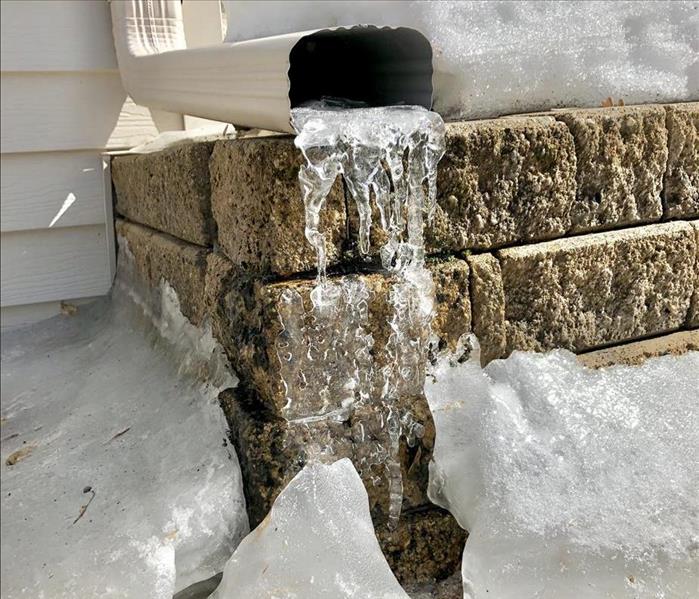Does Melting Snow cause Flooding?
5/1/2021 (Permalink)
How to Prevent Snowmelt Flooding
- Shovel snow away from your home, keeping it away from your foundation. Whenever possible, keep snow 5 feet away from your foundation.
- If your home is on a grade or hill, shovel snow so that it doesn’t roll toward your home when it melts. This ensures melting snow flows away from your home, instead of towards it.
- Clear snow from your roof to prevent excessive buildups. This prevents a significant amount of water flowing through your gutters during a thaw.
- Keep drainage areas around your home clear of snow and ice build-up. This ensures melting snow will drain properly and helps prevent backups.
- Inspect basement walls for cracks. This includes caulking around windows too. Make repairs as necessary to prevent water from entering your basement.
- Check your landscaping before the snow arrives to ensure the ground slopes away from your home. Add additional soil if necessary to help melting snow flow away from your foundation.
- Check your roof for ice and snow build-up. This can lead to ice damages that allow melting snow to enter through your roof.
- Inspect your gutters and downspouts. Clear leaves and other debris regularly during the fall, as this can create blockages. Add downspout extensions to channel melting snow away from your home.
- Check for and clear ice dams hanging from gutters. This places them directly over the perimeter of the home's foundation, meaning that when they melt, they could lead to an increased flooding threat in the basement.
- Test your sump pump during the winter to ensure it works properly when the snow melts. Pour a bucket of water into the sump basin to engage the pump. If it doesn’t turn on, unplug the pump and investigate the issue.
- Never ignore water in your basement. Investigate and repair the source as soon as possible.
- If you have water in your basement or a flood from melting snow, dry and clean the area as quickly as possible.





 24/7 Emergency Service
24/7 Emergency Service
